April 28, 2023
Horses are magnificent creatures that have been domesticated for centuries. They have served humans in a variety of ways, such as transportation, agriculture, sports, and recreation. Unfortunately, horses are also prone to injuries and illnesses, affecting their overall health and performance. As a horse owner or caretaker, it is essential to understand the common injuries that horses can experience and how to prevent or treat them.
The Most Common Horse Injuries
#1. Tendon and Ligament Injuries
Tendon and ligament injuries are prevalent among horses, especially in their lower limbs. Tendons and ligaments are vital structures that support the horse’s bones and joints, and they can be easily damaged due to overuse, trauma, or poor conditioning. Horses involved in sports such as racing and jumping are more susceptible to these injuries due to the intense training and pressure they endure.
Symptoms of tendon and ligament injuries include lameness, swelling, heat, and pain in the affected limb. Treatment usually involves rest, ice, and anti-inflammatory medication. However, severe cases may require surgery or regenerative therapies such as stem cell treatments.
Prevention is key when it comes to tendon and ligament injuries. Horse owners should ensure their horses receive proper training, warm-up and cool-down exercises, and sufficient rest and recovery time to reduce the risk.
#2. Hoof Problems
Hoof problems are also common among horses and can be caused by various factors such as poor nutrition, improper shoeing, and inadequate hoof care. If left untreated, hoof problems can lead to lameness, discomfort, and infection.
Common hoof problems include thrush, abscesses, and laminitis. Thrush is a bacterial infection that affects the frog of the hoof, leading to a foul odor and black discharge. Abscesses are pockets of infection that occur within the hoof, causing intense pain and lameness. Laminitis is a severe condition that affects the sensitive tissues in the hoof, leading to severe pain and lameness.
Preventing hoof problems involves regular hoof care, proper nutrition, and appropriate shoeing. Horse owners should ensure their horses’ hooves are cleaned, trimmed, and inspected regularly by a farrier or hoof care professional.
#3. Joint Problems
Horses rely on their joints for movement, so joint problems can significantly impact their performance and quality of life. Joint problems can be caused by various factors such as age, overuse, and genetics.
Common joint problems include osteoarthritis and synovitis. Osteoarthritis is a degenerative joint disease that affects the cartilage and bones within a joint, leading to stiffness, pain, and lameness. Synovitis is the synovial membrane inflammation within a joint, leading to swelling, pain, and stiffness.
Treatment for joint problems usually involves a combination of medication, rest, and joint supplements such as glucosamine and chondroitin. In severe cases, surgery may be required.
To prevent joint problems, horse owners should ensure their horses receive appropriate training, warm-up and cool-down exercises, and sufficient rest and recovery time. Additionally, feeding joint supplements and maintaining a healthy weight can help prevent joint problems from occurring.
#4. Muscle Injuries
Muscle injuries are common among horses, especially those involved in sports such as racing, jumping, and dressage. Muscle injuries can be caused by overuse, strain, and trauma.
Common muscle injuries include strains, tears, and bruising. Symptoms of muscle injuries include lameness, swelling, heat, and pain in the affected muscle.
Treatment for muscle injuries usually involves rest, ice, and anti-inflammatory medication. In severe cases, surgery may be required.
To prevent muscle injuries, horse owners should ensure their horses receive proper training, warm-up and cool-down exercises, and sufficient rest and recovery time. Additionally, feeding a balanced diet and maintaining a healthy weight can help prevent muscle injuries from occurring.
#5. Wounds
Wounds to horses can occur for various reasons, such as accidents, fights with other horses, or bites from insects or snakes. The injury’s severity depends on the wound’s location and size, as well as the age and health of the horse.
It’s important to clean and dress the wound immediately to prevent infection and promote healing. For minor wounds, a disinfectant solution can be used to clean the area, followed by an antiseptic cream or ointment to prevent infection. A veterinarian should be consulted for more severe wounds to determine the appropriate treatment, including antibiotics, pain management, and wound dressings.
It’s also important to monitor the wound closely and watch for signs of infection, such as swelling, redness, discharge, or fever. If these symptoms occur, it’s essential to seek veterinary attention immediately. Additionally, keeping the horse in a clean and safe environment can help prevent further injury and promote healing.
Heal These Common Horse Injuries with Gladiator Equine
Horses are incredible animals, showing elegance and strength in everything they do. They are powerful and agile creatures that can run at incredible speeds, jump over fences, and navigate rough terrain with ease. However, like any other animal, they are not immune to injury. Whether it is due to an accident, overexertion, or just general wear and tear, horses can suffer from a variety of injuries that will require care.
Our far-infrared technology is paving the way for accelerated healing and overall wellness in horses. Gladiator Equine therapeutics can decrease the time needed for wound healing and complications for prolonged healing. Contact Gladiator Equine today to learn more about our noninvasive, patented technology.


